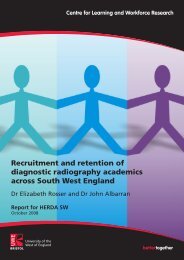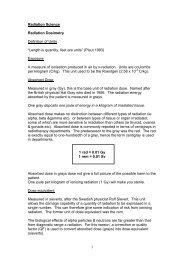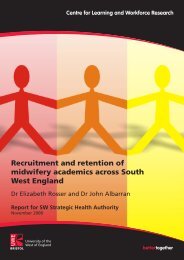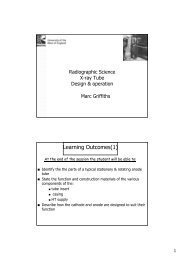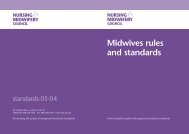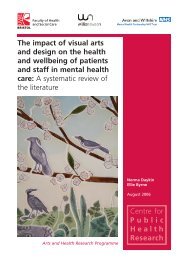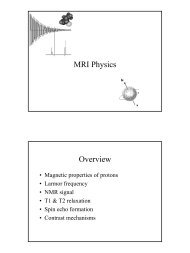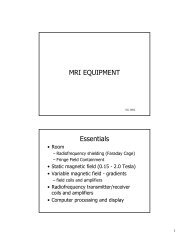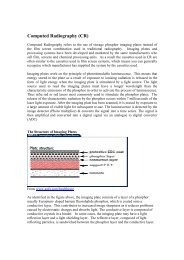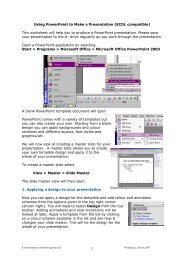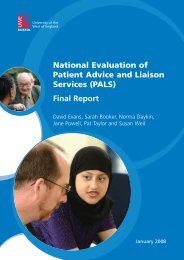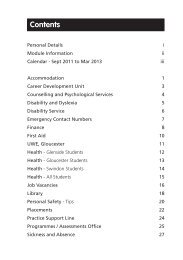The impact of arts on health and wellbeing of young people: a ...
The impact of arts on health and wellbeing of young people: a ...
The impact of arts on health and wellbeing of young people: a ...
You also want an ePaper? Increase the reach of your titles
YUMPU automatically turns print PDFs into web optimized ePapers that Google loves.
As well as lack <str<strong>on</strong>g>of</str<strong>on</strong>g> clarity about aims, there is a lack <str<strong>on</strong>g>of</str<strong>on</strong>g> agreement about the<br />
best way to evaluate <str<strong>on</strong>g>arts</str<strong>on</strong>g> for <strong>health</strong> projects. Measurable outcomes, such as<br />
psychosocial state, are seen by some as a useful indicator <str<strong>on</strong>g>of</str<strong>on</strong>g> <strong>young</strong> <strong>people</strong>’s<br />
<strong>health</strong> <strong>and</strong> well-being (Murphy <strong>and</strong> Bennett, 2003). Yet methodologies used<br />
within evidence based <strong>health</strong> care, such as the r<strong>and</strong>omised c<strong>on</strong>trol trial (RCT)<br />
are not necessarily accepted as the ‘gold st<strong>and</strong>ard’, with some practiti<strong>on</strong>ers<br />
viewing these approaches as reducti<strong>on</strong>ist <strong>and</strong> likely to undermine the<br />
creativity that defines <str<strong>on</strong>g>arts</str<strong>on</strong>g> interventi<strong>on</strong>s (Angus, 2002). Hence practiti<strong>on</strong>ers<br />
resist crudely causal accounts <str<strong>on</strong>g>of</str<strong>on</strong>g> the relati<strong>on</strong>ship between creative acti<strong>on</strong> <strong>and</strong><br />
<strong>health</strong> outcomes (Health Educati<strong>on</strong> Authority, 1999).<br />
In reality, most <str<strong>on</strong>g>arts</str<strong>on</strong>g> for <strong>health</strong> evaluati<strong>on</strong>s are small scale <strong>and</strong> qualitative in<br />
design. A number <str<strong>on</strong>g>of</str<strong>on</strong>g> <str<strong>on</strong>g>The</str<strong>on</strong>g>atre in Educati<strong>on</strong> (TIE) programmes have been<br />
subject to small scale evaluati<strong>on</strong>s in the past decade. TIE has been<br />
evaluated in c<strong>on</strong>necti<strong>on</strong> with a wide variety <str<strong>on</strong>g>of</str<strong>on</strong>g> issues including sexual <strong>health</strong><br />
(Denman et al., 1995), appropriate physical c<strong>on</strong>tact (Orme <strong>and</strong> Salm<strong>on</strong>, 2002)<br />
<strong>and</strong> homelessness (Day, 2002). Allott et al.’s review (1999) identified a<br />
number <str<strong>on</strong>g>of</str<strong>on</strong>g> evaluati<strong>on</strong>s <str<strong>on</strong>g>of</str<strong>on</strong>g> TIE programmes with drugs educati<strong>on</strong> elements.<br />
TIE programmes tend not to be didactic <strong>and</strong> have an emphasis up<strong>on</strong> affective<br />
<str<strong>on</strong>g>impact</str<strong>on</strong>g> <strong>and</strong> social skills, making quantitative evaluati<strong>on</strong> difficult. Process <strong>and</strong><br />
<str<strong>on</strong>g>impact</str<strong>on</strong>g> evaluati<strong>on</strong>s report positive short-term effects up<strong>on</strong> student attitudes<br />
<strong>and</strong>, to a lesser extent, knowledge. However the review found little evaluati<strong>on</strong><br />
evidence in terms <str<strong>on</strong>g>of</str<strong>on</strong>g> outcome effects.<br />
2.4 Rati<strong>on</strong>ale for the literature review<br />
This literature review seeks to provide an overview <str<strong>on</strong>g>of</str<strong>on</strong>g> current evidence<br />
surrounding the effects <str<strong>on</strong>g>of</str<strong>on</strong>g> <str<strong>on</strong>g>arts</str<strong>on</strong>g> for <strong>health</strong> <strong>on</strong> adolescents <strong>and</strong> <strong>young</strong> <strong>people</strong><br />
between 11 <strong>and</strong> 18 years old. <str<strong>on</strong>g>The</str<strong>on</strong>g> review includes music, performance,<br />
drama <strong>and</strong> dance in community settings as well as n<strong>on</strong>-curricular activity in<br />
mainstream educati<strong>on</strong>. Clinical populati<strong>on</strong>s <strong>and</strong> settings such as hospitals<br />
were not included in the review as research in these settings addresses<br />
different questi<strong>on</strong>s <strong>and</strong> uses different methodologies to that in community<br />
settings. <str<strong>on</strong>g>The</str<strong>on</strong>g> review seeks to strengthen the evidence base surrounding <str<strong>on</strong>g>arts</str<strong>on</strong>g><br />
for <strong>health</strong> activity am<strong>on</strong>g <strong>young</strong> <strong>people</strong> in the community.<br />
5



